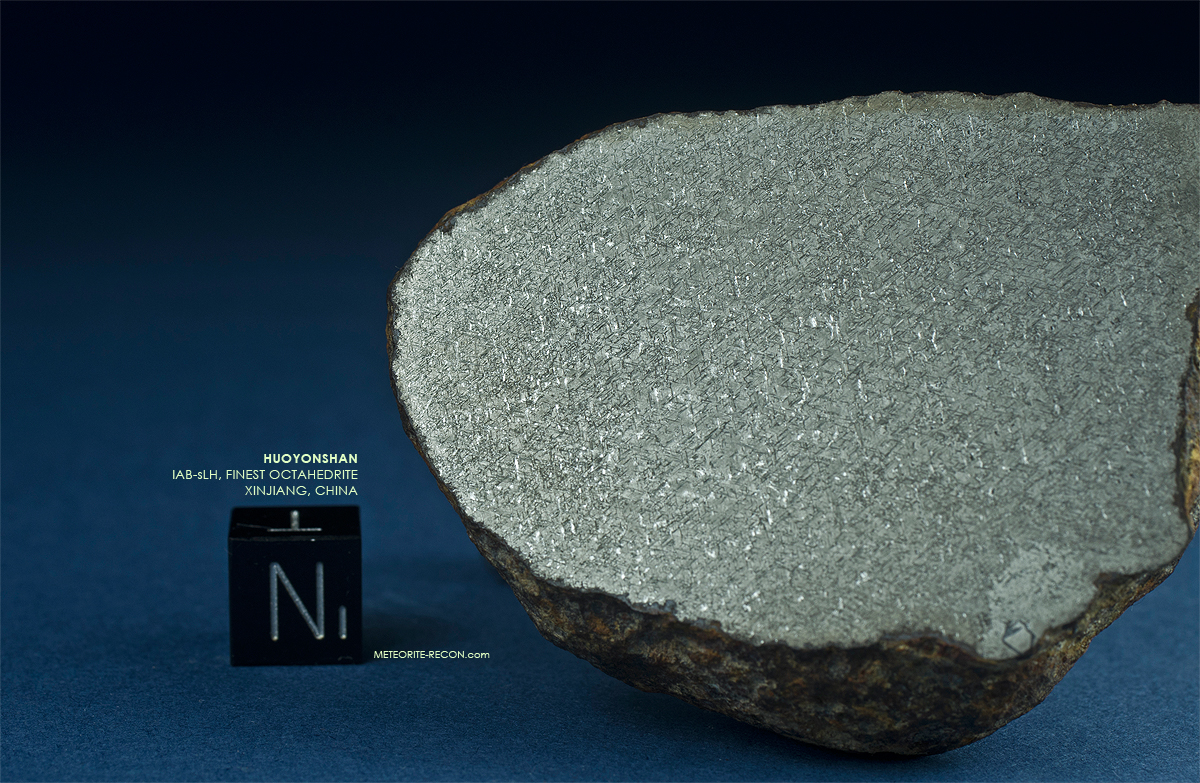HUOYANSHAN
Xinjiang, China
TKW: 700 kg (thousands of masses)
Endcut: 315.0 g
“The first piece was found on Oct. 6, 2016, by Mr. Yanzheng Wang and Jifa Li, workers from a nearby oil field, who were searching for wind-eroded stones on the desert. The find site is 15 km NE of the Mountain Huoyanshan, which was noted in the famous 16th century novel, “A Journey to the West,” as having emerged from pieces of charcoal on fire falling from Heaven. 18 more pieces were collected from a strewn field of 2 × 1.5 km2 during the following days. These irons weigh from 100 g up to 8.9 kg, with a total mass of ~45 kg. The news was leaked soon, and people rushed the desert to search for the irons with metal detectors. It is estimated that thousands pieces with a total mass of ~700 kg have been collected” (Meteoritical Bulletin no. 106).
With a band width of only <0.035 mm, Huoyanshan hides its beauty in the submillimeter range. Viewed with a loupe or stereo microscope, the iron reveals a unique, cryptographic pattern, perpetuating in bizarre cuneiform. Huoyanshan is hard to acquire, difficult to etch, and even more challenging to photograph, yet truly one of the most rewarding meteoritic irons to work with.
.




